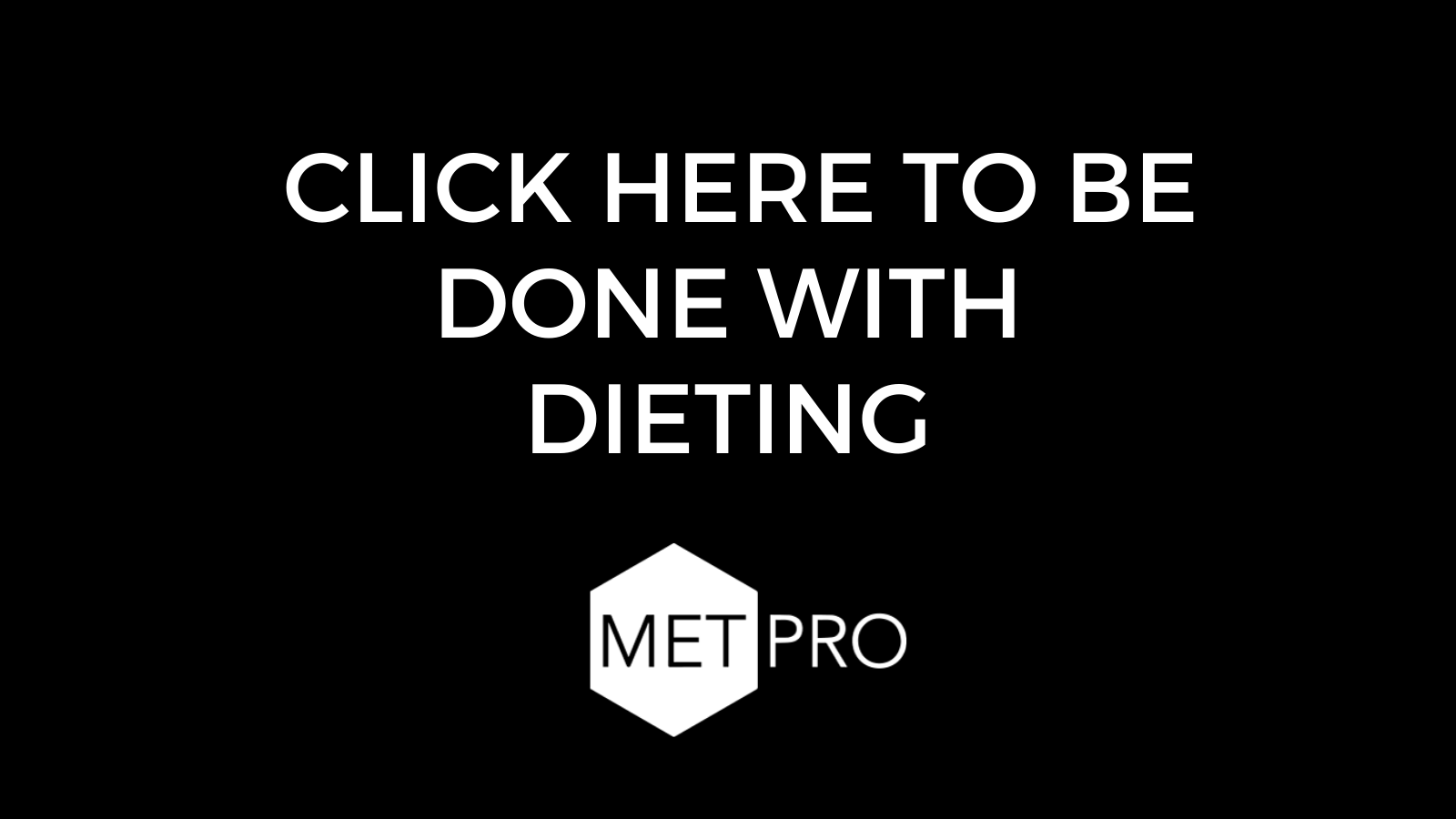I am joined by MetPro Founder, Angelo Poli and we will be discussing prehab and posture. Angelo, thank you for joining me.
Thanks for having me back. I always love being here.
I always love hearing your insights. We always have some fascinating discussions. I'm excited about this one. Walk me through. After being cooped up through the pandemic, we have all these people that are getting back to exercise and are finding new aches and pains. We hear about prehab and posture. Is there something to all of this?
There is, Crystal. If you're anything like me, not everyone has spent the last couple of years of the pandemic sitting hunched over a computer but let's be honest, most of us have. This is the reality. It's where our lifestyle was going but there's something to it. The issue is not new but the need for practical application or urgency, the time is right for it because we all need some help in that department.
If you're trying to restart a fitness program and you've been a little out of the focus, how can you restart one and do it safely?
On this topic, there's nothing new. We're talking about methodologies that have been sought after and applied for years. You'll recognize some of these names and some of these names you may not, which are Joseph Pilates and Ida Rolf. That may be a little more obscure to some of the community. She had tremendous contributions to musculoskeletal rehabilitation. There’s also Moshé Feldenkrais, Paul Chek and Pete Egoscue. These are all names of people who are giants in the field of helping individuals restore musculoskeletal health and wellness. They've all taken a little bit different angles on it.
The reality is we know what the result is for the human body and because we know what the outcome is going to be, there are things that we can do to try and offset that. Here's what I'm talking about because I can see you scratching your head going, “What are you talking about?” Have you ever seen a little old man walking down the street hunched backward?
No, that's not a thing.
What happens is as our body responds similarly to injury, atrophy, aging, overuse and underuse, our postural muscles shorten and tighten causing a forward flection of the head and shoulders, a rounding of the spine, a shrinking of the musculoskeletal system eventually and a forward deviated posture. As I'm describing that, I'm sure everybody can picture in their head what that looks like. Those are the postural deviations that no matter who you are, we have to fight against and maintain because that's the natural development as we age. That's part of the natural aging process but there's a way that we can try and mitigate that.
Adjacent to that, other issues are more unique and specific to the person. Without getting into too much of an anatomy lesson, there are different types of postural deviations. I'm going to break them into two categories. If you're a professional in the field, you'll know this is an oversimplification but the two basic categories are frontal plane and a sagittal plane or even more simply, front-back alignment issues or left-right alignment issues.
Most of my research in this field was done many years ago but a lot of the same research still holds true. I'll share a little bit of what some of those findings were but in a nutshell, you can tie someone's likeliness of an injury to their bilateral function. What that means is we are bilateral creatures. We walk left and right. We can tolerate a measure of forwarding translation of the head and shoulders and frontal plane deviations with some cost but our bodies do not tolerate left-right deviations. In other words, if the right side of your body does not match the left side of the body, pain is coming. It's just a matter of when.
When we talk about where to start, I always recommend somebody identify if this is some minor muscle imbalance and some minor postural deviation where you noticed you'd like to get your shoulders back, your head back or your feet more forward-facing or is this a major issue where you're noticing a large difference between the right and left sides of your body? If you're noticing a large difference between the right and left sides of your body, go and work with a professional that can help you with this.
If you are simply re-entering the exercise workforce after a few years of us all hanging out at home a little more than we used to and recognize because all of the talks around the importance of postural alignment and the importance of muscular balance that you want to re-enter exercise program safely, then I can give you a few pointers for that.
For people to self-diagnose, when you say something off that's a large difference between left and right, are you saying something as simple as maybe having a limp on your leg or something more in-depth than that?
That could be but don't self-diagnose. Go to a medical professional.
What I mean to say is, is it something simple or complex?
I got it. That's exactly right. You hit the nail on the head. You’ll know if it is simple or complex. If you're limping on one side of the body, it’s complex. We're all aware of the visual alignment when we look in the mirror but if you’re having pain or you’re limping, go to the doctor. If you’re wanting to get started with an exercise program and simply trying to figure out where you should begin, first, I'll start with the factors that contribute to musculoskeletal misalignments and balances.
Some of it is obvious and some of it is a little less obvious. Let's start with the obvious, which is your cell phone, computer, car, couch and TV. Many years ago, the research out of the UK was that the average 18 to 24-year-old would spend under nine hours a day in front of a computer or a mobile device. I want to remind you that was many years ago.
If you have a doctor's appointment scheduled, there is a 20% chance it is for something related to musculoskeletal imbalance. Low back pain and neck pain are two of the most common reasons people go to the doctor. All of those can be related because the instances of issues because of the musculoskeletal breakdown undeniably have gotten worse.
I did a presentation on this where I showed photos. I started with photos of statues and people from the mid-centuries and then moved into photos of school-aged kids in the 1920s, 1930s, 1940s, 1950s and down the line. Except for the few outliers, what you saw was that the children and teenage kids’ alignment were pretty good. They had their head upright and shoulders forward-facing.
Right up until you got to about 1990, it was a disaster and then it started plummeting. Look at old Google school photos and look back from the early decades compared to now. You will see the massive exchange and how much worse the slumping is. It's tied to our lifestyle, the amount of sitting we do and our technology. There's the obvious.
For some of the not so obvious, anatomically or biologically speaking, our body has muscles that are not all the same. We're wired differently. We have postural muscles and what's called phasic muscles. Here's an oversimplification. Think of it as one has constant electricity going to it and the other only has electricity going to it when it's turned on. They're innervated differently.
To illustrate, your biceps, pectorals and anterior delts are all postural muscles where at rest, even while you're asleep, have the muscle tone to them. In other words, impulse or electricity is going to them. They always have some measure of tone. However, your lower traps, rhomboids and a lot of your posterior chain do not. They're phasic. Either they're activated or not.
Your phasic muscle groups respond to injury, atrophy, overuse or underuse by lengthening and weakening. Your postural muscles respond to those same scenarios by shortening and tightening. For proof, relax your arm down by your side. What you will notice is there's a slight bend in your elbow because your bicep has a tone to it even at rest. Your tricep is not the same way. It's wired differently. We're starting to see the biology of what goes into as we age. We hunch forward. All those anterior muscle groups are winning the battle. Your posterior muscle groups are running up the white flag.
Knowing that we can approach our reintegration with exercise a little bit more intelligently. What happens a lot of the time is people saying, “I want to get back into exercise, get healthy and get rid of some of these aches and pains.” They then start with pushups. Don't get me wrong. Don't come out of this episode and say, “Angelo said pushups are bad.”
Pushups are one of my favorite exercises. If you hire me to coach you, there's going to be pushups involved but let's think of the big picture. If we've been hunched over a computer for some years where already our head and shoulders are forward, our pecs, biceps, traps and rhomboids are tight and the posterior chain is checked out and the first thing we start with is more strengthening of those muscle groups that are already short and tight, that’s going to make it even worse.
Everyone's thinking, “That's not helpful. What do I start with?” What we do start with is to include the posterior chain. Some of us may not know what that means but it’s the back muscles or the muscles that pull you back instead of curl you forward. Don't work those exclusively but don't forget about them. In 2022, hopefully coming out of the pandemic and out of a season of sitting, this is an important time to look at the body holistically and not forget that. I'm hoping this conversation will be the catalyst for people to go and do a little bit more of their research but there's so much information coming out about prehab and exercises for vitality and wellness. There are giants in the field that have contributed so much that I've been a student of for years.
What I like to educate on is the big picture philosophies around the why. When you understand the story arc of your biology and how your body is over time trying to curl forward, you can see that there's some logic in starting with exercises and activities that will directly offset that. Here’s a little bit less known fact. One of the largest contributors to asymmetries within our body, which means postural deviation, a misalignment or an imbalance, is the fact that your body prioritizes vision largely above many other functions. The way we're designed is incredible. Your vision is tied to your sense of balance proprioception so therefore, it’s your ability to survive walking down the street with any level of altered terrain. You have to have good vision to traverse safely.
What that means is that your body will always align your eyes level on the horizon. If there is a misalignment or a postural imbalance or one muscle group is too strong or too tight or one muscle group is too weak or there is a right-left deviation, what's going to happen is your body is going to create a compensation pattern to adjust so your head and neck are tilted still in such a way that your eyes remain level on the horizon so you don't trip and fall. That is a large contributing factor to our posture and alignment that some people are not aware of, which is why sometimes individuals notice their heads and shoulders roll forward.
I got interested in this because I have horrible posture. I've dealt with it because I was young and stupid. There might have been a seesaw incident or a motorcycle incident. A little bit of pain and injury heightens the awareness of these factors. I grew up very interested in this. As I started learning about muscle balance, one of the first things I wanted to do was to correct upper body alignment.
No matter how hard I tried to pull my shoulders back and get my head up, it wasn't working. I could get it back and upright but as soon as I'd stand up and relax, it went right back to that forward flung position. I didn't realize that because my feet were externally rotated and my hips were forward, therefore, to prevent myself from falling backward, my body acclimates and it throws my head and shoulders forward as a counterweight to maintain an upright stance with my eyes level on the horizon.
That requires that when we're addressing muscle balance, we have to take a holistic approach. If you said, “I've been working at this for years,” don't give up. Take a couple of these pieces, go back to the drawing board, ask your professional and see if you can put the pieces together to improve your posture and alignment holistically.
For professionals out there, when we're taking advanced coaches through their training and they want a little bit more discerning approach to how to work with your clients to create symmetry and this can also be for athletic performance or injury prevention and wellness, start with the area of greatest asymmetry. That means wherever the largest postural deviation or misalignment is, look there first. That seems pretty obvious and that's your priority.
A close second then is when there are multiple areas of deviation or you're uncertain where it's stemming from, start from the center of your body and then work to the extremities, not necessarily the other way around. Start from the center, which is the largest muscle group or postural muscle group. I define those as any large muscle groups that connect to the large bones of the body, which are your hips, femur and spine. Work out from there.
It takes a little longer to do it that way but what you're doing is you're laying the foundation. Instead of correcting something at the end of the whip that's going to go back out, start from the center and slowly work your way out. Those are the principles behind how we would approach it. How does this help the average reader? On day one, don't forget about your posterior chain. Specifically, that’s your upper back muscles, glute muscles and hamstring muscles.
I feel like this is a good time to talk about the MetPro app because there are so many great workouts in there. If you go to any random workout class, many of them might be based on the frontal plane or the front muscles. You have your push-ups and bench presses. Unless they're talking specifically about their posterior chain, they might not include them so you can't assume every class that you might take in any gym is going to include those muscles.
It doesn't mean that any of those programs are bad programs but there are a few practical matters. There's a reason why boot camps in the park tend to include a lot of pushups. It’s because they're easy to access. There's nothing wrong with that. Our fitness model is loosely based on what's been passed down for years which was originally the military fitness model. It came from the boot camps. You do jumping jacks, pushups, squats and lunges. These are all movements that have been implemented for conditioning the human body for decades but what's new is not that there's a problem with those movements. What's changed is our bodies.
Generally speaking, I can have a bias when I go into an evaluation, even before I've met you. It is reasonable for me to assume that your anterior muscles are dominant or your posterior muscles have been underworked and are weak. If you go into the MetPro app, you're going to see not an abandonment of all the standards but an emphasis on that posterior chain because it's going to lay the foundation and contribute to wellness.
I can't get through in good conscience this whole topic without bringing up the value of core work. Keep in mind that there are different definitions of what qualifies as core work. There's abdominal training, which is fine because then you have nice-looking abdominals. It doesn't mean that that's not core work but core work from this standpoint is going to be conditioning the large muscle groups that stabilize your pelvis and spine and connect to your femurs. Those are the core muscles that are going to contribute to stability. Include core work and if you want your abs to look good, do some ab work too. That's all part of it.
I like to emphasize core work and posterior chain as a little bit larger percentage of the overall contribution of exercise that somebody may start with. We love postural work, stretching and flexibility. An interesting fact is that our body has what's called a myotonic reflex or a stretch reflex. There are so many built-in mechanics designed to align us. What that reflex dictate is if you were to do a bicep curl, your tricep deactivates. That's the agonistic-antagonistic muscle relationship. When you do a tricep extension, your bicep deactivates or turns off to allow your arm to extend.
There's a corollary relationship between muscle groups. Don't forget about that. Try and always work both sides of the coin. Don't just work your biceps. Work your triceps also. That's even a stronger correlation. If you're going to do pectoral muscles, you need to do the posterior chain muscles. If you're going to do hip flexors, you need to do glutes. If you're going to do quadriceps, you're going to do hamstrings. Hamstrings are a biggie specifically because it’s the number one way we train our quad but if you're a beginner and you can't do a full squat or you're easing into it by doing a dip, a partial squat works your quadriceps mostly.
A deep squat works glutes and hamstrings. Our knees don't often let us start with a deep squat if we're deconditioned. You need to include other activities like a hip bridge or a leg curl at a light load where you can engage those hamstrings at the same level that you're engaging the quadriceps. We're getting a little too deep into anatomy for our topic here but these are some ideas for when you do go back and return to the gym and approach a training model suited for you.
The big takeaway from that is to make sure you're balancing your workout. Most people are not going to automatically go to that posterior chain so be cognizant and purposeful in designing a workout that includes those.
If you're having pain, go to a qualified medical professional that is skilled in therapeutic modalities or a therapist. If you simply want to learn more, there are lots of professionals out there that can help you. We can help you. That's the way here at MetPro. It’s to teach and educate people. We might also talk a little bit about how nutrition plays a role in your wellness if you have a conversation with us.
Stay passionate about your pursuit of learning when it comes to wellness and self-improvement. In fitness, there's always new information coming out and a better application of information that we have. As that becomes more readily available, adopt newer methods and modalities. I have seen the wellness and fitness field evolve over the years.
Is there anything else that people need to know when it comes to how all this plays into what we do at MetPro?
What we're going to do at MetPro is help somebody get well and that usually includes a holistic approach to nutrition and fitness. That fitness component needs to match your body's needs and dictate them. That's going to be some musculoskeletal balance, flexibility work or postural work and it's going to be a holistic approach. It’s not a one-size-fits-all modality forever approach. Whether you're working with us or anyone else, you always want to keep that mindset. Always take a holistic approach but be specific and know what your objective is. It should be measurable and calculated. You should know whether you're moving toward that objective or moving away from it.
Both are very important. Angelo, thank you so much for your time.






